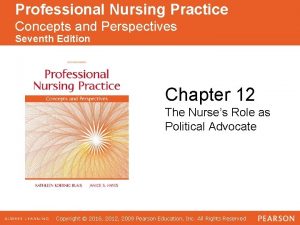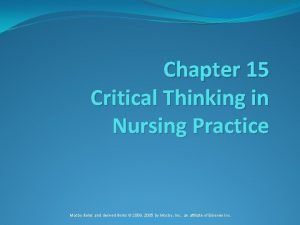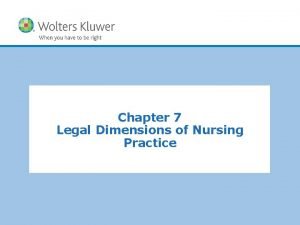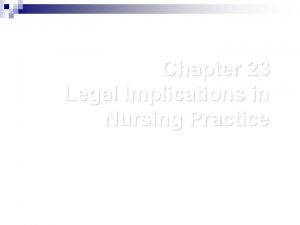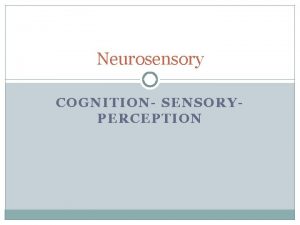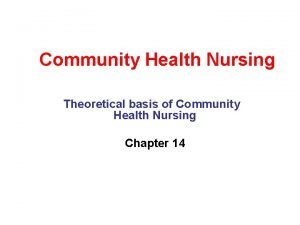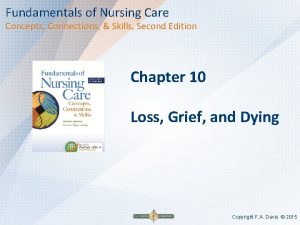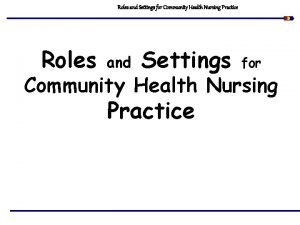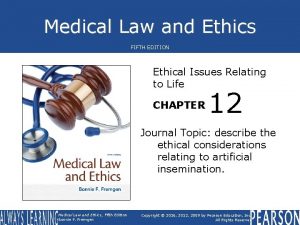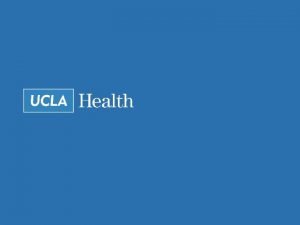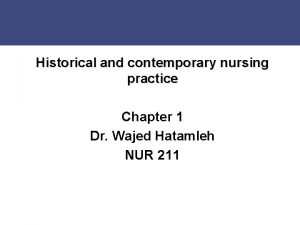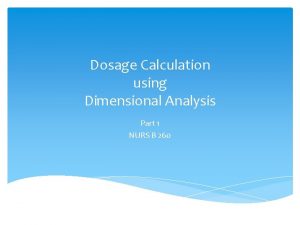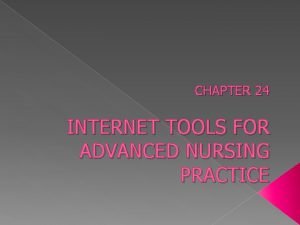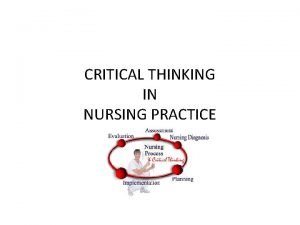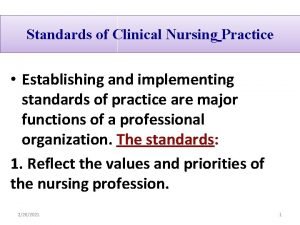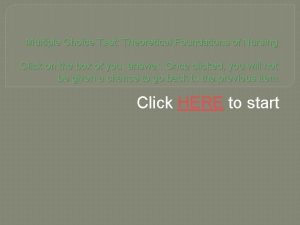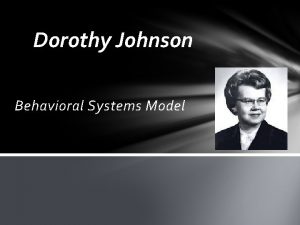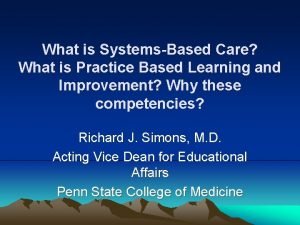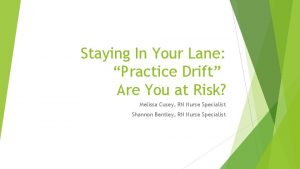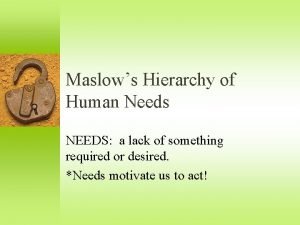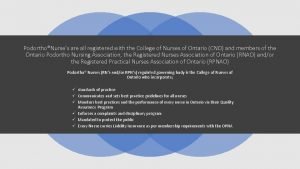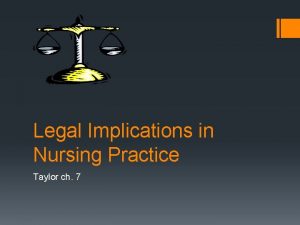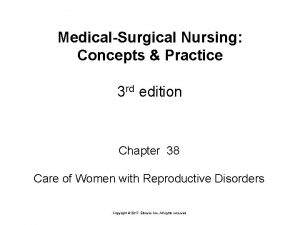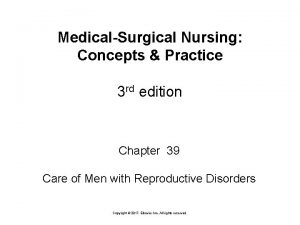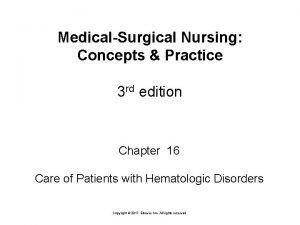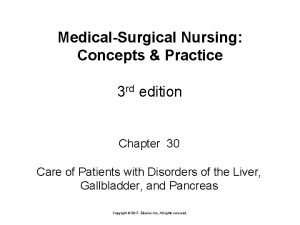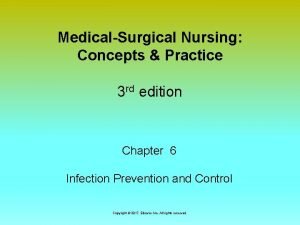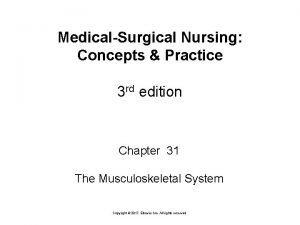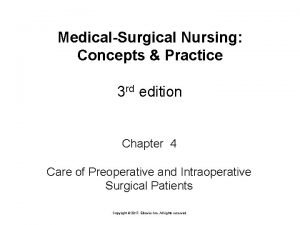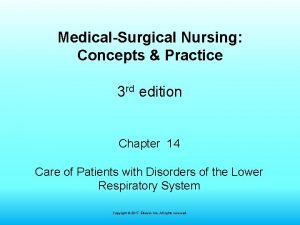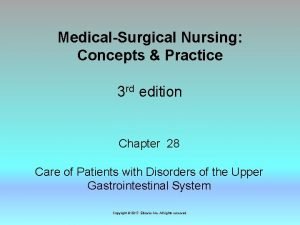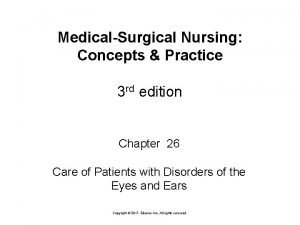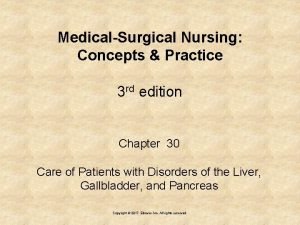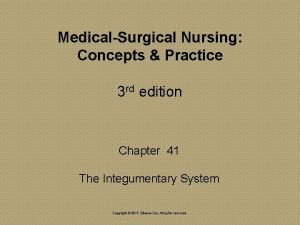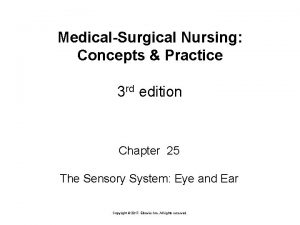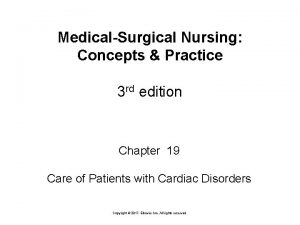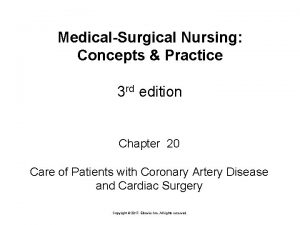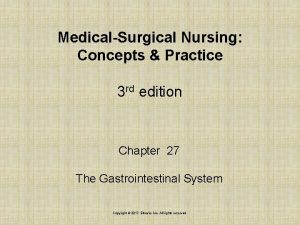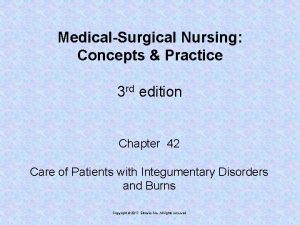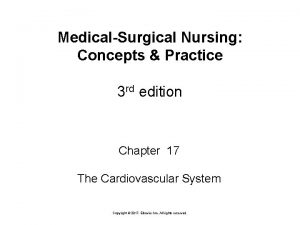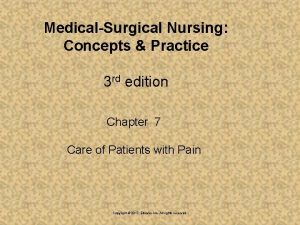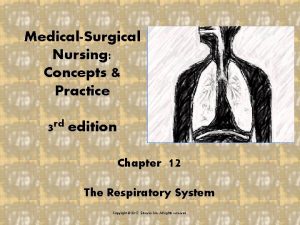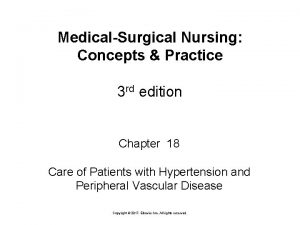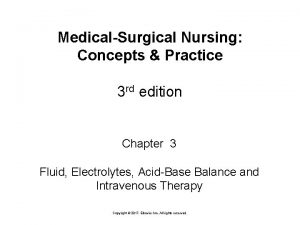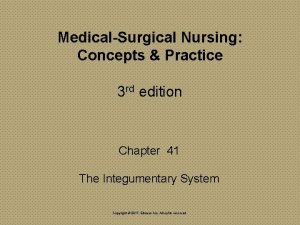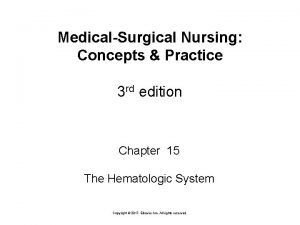MedicalSurgical Nursing Concepts Practice 3 rd edition Chapter














































- Slides: 46

Medical-Surgical Nursing: Concepts & Practice 3 rd edition Chapter 22 Care of Patients with Head and Spinal Cord Injuries Copyright © 2017, Elsevier Inc. All rights reserved.

Head Injuries Etiology Pathophysiology Older adult considerations Signs and symptoms Diagnosis Treatment Surgical intervention Copyright © 2017, Elsevier Inc. All rights reserved. 2

Hematomas From Black JM, Hawks JH: Medical-surgical nursing: clinical management for positive outcomes, ed. 8, Philadelphia, 2009, Saunders. Copyright © 2017, Elsevier Inc. All rights reserved. 3

Pathophysiology of Head Injuries Closed injury versus open injury Contusion Coup-contrecoup injury Subdural hematoma Epidural hematoma Intracerebral hematoma Copyright © 2017, Elsevier Inc. All rights reserved. 4

Electroencephalography (EEG) From Fuller G, Manford M: Neurology, ed. 3, London, 2011, Churchill Livingstone. Copyright © 2017, Elsevier Inc. All rights reserved. 5

Copyright © 2017, Elsevier Inc. All rights reserved. 1

Magnetic Resonance Imaging Midline Sagittal View of the Brain From Chipps E, Clanin N, Campbell V: Neurologic disorders, St. Louis, 1992, Mosby. Copyright © 2017, Elsevier Inc. All rights reserved. 7

Surgical Interventions on Head Injuries Preoperative period Postoperative period Nursing management Copyright © 2017, Elsevier Inc. All rights reserved. 8

Postoperative Care: Special Considerations Positioning Keep the neck in midline and prevent excessive hip flexion. Use caution when performing nasal suctioning. Watch for cerebrospinal fluid (CSF) leakage from nose, ear, and operative site. Quiet, nonstimulating environment Prompt reporting Copyright © 2017, Elsevier Inc. All rights reserved. 9

Nursing Management Special precautions Ø Ø Absolute bed rest Cover draining ear with sterile gauze. Avoid nose blowing and picking. Do not block drainage. Copyright © 2017, Elsevier Inc. All rights reserved. 10

Head injury-priority assessments Respiratory status- changes in LOC, GCS Cranial nerve function-eye blink response, gag and cough reflexes, tongue and shoulder movements Check pupils for PERRLA 1

Copyright © 2017, Elsevier Inc. All rights reserved. 1

Copyright © 2017, Elsevier Inc. All rights reserved. 1

Copyright © 2017, Elsevier Inc. All rights reserved. 1

Increased Intracranial Pressure Etiology Pathophysiology Signs and symptoms Diagnosis Treatment Complications Copyright © 2017, Elsevier Inc. All rights reserved. 15

Causes of increased ICP Hypercarbia Endotracheal intubation Coughing or blowing the nose Extreme neck or hip flexion/extension HOB less than 30 degrees Increasing intra-abdominal pressure, ie, restrictive clothing or Valsalva maneuver 1

Pathophysiologic Changes from Brain Injury Copyright © 2017, Elsevier Inc. All rights reserved. 17

Common Abnormal Respiratory Patterns Associated with Coma From Lewis SL, Dirksen SR, Heitkemper MM, et al: Medicalsurgical nursing: assessment and management of clinical problems, ed. 9, St. Louis, 2014, Mosby. Copyright © 2017, Elsevier Inc. All rights reserved. 18

Treatment and Care of Increased ICP Supportive care Osmotic diuretics Furosemide (Lasix) Dexamethasone (Decadron) Ventilator and oxygenation Barbiturates and antiseizure medications Temperature control Copyright © 2017, Elsevier Inc. All rights reserved. 19

Actions that decrease ICP Elevate HOB to at least 30 degrees Avoid extreme flexion/motion of the head Ø Maintain head in neutral, midline position Maintain a patent airway Administer O 2 as ordered Administer stool softeners to lessen straining of the Valsalva maneuver Report any CSF drainage from ears/nose Maintain calm, quiet environment Maintain normal body temp 1

Complications Hydrocephalus Diabetes insipidus Copyright © 2017, Elsevier Inc. All rights reserved. 21

Nursing Management Assessment (data collection) Ø Ø Ø Perform careful neurologic assessment. Monitor level of consciousness (LOC), pupillary reactions, level of neuromuscular activity, and vital signs. “Neuro checks” are performed every 15 minutes to every 2 hours for the acute patient. Copyright © 2017, Elsevier Inc. All rights reserved. 22

Immediately Report Increasing ICP Extreme restlessness or excitability following a period of apparent calm Deepening stupor and decreasing LOC Headache that is unrelenting and increasing in intensity Vomiting, especially persistent, projectile vomiting Copyright © 2017, Elsevier Inc. All rights reserved. 23

Immediately Report Increasing ICP (Cont. ) Unequal size of pupils and other abnormal pupillary reactions Leakage of CSF from the nose or ear Changes in the patient’s blood pressure, pulse, or respiration; widening pulse pressure; a slow, bounding pulse Copyright © 2017, Elsevier Inc. All rights reserved. 24

Goals of Nursing Care Maintain cerebral perfusion. Reduce ICP. Maintain adequate respiration. Protect from injury. Maintain normal body functions. Prevent complications. Copyright © 2017, Elsevier Inc. All rights reserved. 25

Injuries of the Spine and Spinal Cord Etiology Pathophysiology Signs and symptoms Diagnosis Treatment Copyright © 2017, Elsevier Inc. All rights reserved. 26

Vertical Compression From Ignatavicius DD, Workman ML: Medical-surgical nursing: critical thinking for collaborative care, ed. 7, Philadelphia, 2013, Saunders. Copyright © 2017, Elsevier Inc. All rights reserved. 27

Level of Spinal Cord Damage C 1 to C 3 C 4 C 5 C 6 C 7 C 8 T 1 to 10 T 11 and below Copyright © 2017, Elsevier Inc. All rights reserved. 28

Copyright © 2017, Elsevier Inc. All rights reserved. 1

Copyright © 2017, Elsevier Inc. All rights reserved. 1

Four Main Objectives Save the victim’s life. Prevent further injury to the spinal cord by carefully handling the patient. Repair as much of the damage to the spinal cord as possible. Establish a routine of care that will improve and maintain the patient’s state of health and prevent complications, so that eventual physical, mental, and social rehabilitation is possible. Copyright © 2017, Elsevier Inc. All rights reserved. 31

Treatment and Nursing Management Respiratory management Immobilization and surgery Urinary management Psychological care Grief and mourning response Sexual concerns Copyright © 2017, Elsevier Inc. All rights reserved. 32

Crutchfield Tongs for Cervical Traction Courtesy of Michael S. Clement, MD, Mesa, AZ. Copyright © 2017, Elsevier Inc. All rights reserved. 33

Halo Traction Vest for Cervical Stabilization Modified from Urden LD, Stacy KM, Lough ME: Priorities in critical care nursing, ed. 6, St. Louis, 2012, Mosby. In Lewis SL, Heitkemper MM, Dirksen SR, et al: Medical-surgical nursing: assessment and management of clinical problems, ed. 9, St. Louis, 2013, Mosby. Copyright © 2017, Elsevier Inc. All rights reserved. 34

Roto. Rest Delta Advanced Kinetic Therapy System Courtesy of Kinetic Concepts, Inc. , San Antonio, TX. Copyright © 2017, Elsevier Inc. All rights reserved. 35

Complications Spinal shock and neurogenic shock Muscle spasms Autonomic dysreflexia (hyperreflexia) Orthostatic hypotension Deep venous thrombosis Infection Skin breakdown Renal complications Heterotopic ossification Copyright © 2017, Elsevier Inc. All rights reserved. 36

Copyright © 2017, Elsevier Inc. All rights reserved. 1

Nursing Management Assessment (data collection) Nursing diagnosis Planning Implementation Evaluation Rehabilitation Copyright © 2017, Elsevier Inc. All rights reserved. 38

Back Pain and Ruptured Intervertebral Disk (“Slipped Disk”) Etiology Ø Ø Ø Acute lumbosacral strain Instability of lumbosacral spine Osteoarthritis of the spine Intervertebral disk degeneration and spinal stenosis Herniation of the intervertebral disk Copyright © 2017, Elsevier Inc. All rights reserved. 39

Back Pain and Ruptured Intervertebral Disk (“Slipped Disk”) (Cont. ) Pathophysiology Signs and symptoms Diagnosis Treatment Copyright © 2017, Elsevier Inc. All rights reserved. 40

Herniated Disk (Nucleus Pulposus) with Compression of Spinal Cord From Lewis SL, Heitkemper MM, Dirksen SR, et al: Medical-surgical nursing: assessment and management of clinical problems, ed. 7, St. Louis, 2007, Mosby. Copyright © 2017, Elsevier Inc. All rights reserved. 41

Complementary and Alternative Therapies Acupuncture—chronic back pain Acupressure—relieves muscle spasms Massage therapy—relieves muscle spasms Copyright © 2017, Elsevier Inc. All rights reserved. 42

Surgical Procedures Diskectomy Spinal fusion Laminectomy Nursing management Ø Ø Preoperative care Postoperative care Copyright © 2017, Elsevier Inc. All rights reserved. 43

Log-Rolling Procedure From de. Wit SC, O’Neill P: Fundamental concepts and skills for nursing, ed. 4, St. Louis, 2014, Saunders. Copyright © 2017, Elsevier Inc. All rights reserved. 44

Guidelines for the Patient with Low Back Pain or Spinal Surgery Do Ø Ø Ø Ø Bend your knees with your back straight and crouch to lift an item off the floor. Carry items close to the center of your body. Perform your back exercises twice a day; periodically review the correct way to do them. Maintain appropriate body weight; lose weight if overweight. Use a lumbar pillow or roll when sitting and particularly when driving for long distances. Stop and walk around at least every 2 hours when on long trips. Consider how to safely perform a task before starting to do it. Copyright © 2017, Elsevier Inc. All rights reserved. 45

Guidelines for the Patient with Low Back Pain or Spinal Surgery (Cont. ) Do not Ø Ø Ø Lean over without bending the knees. Reach to lift items or lift heavy items higher than the elbows. Stand or sit for long periods. Sleep with your legs out straight without a pillow cushioning under the thighs or between the legs when on the side. Bend from the waist to pick up an item. Twist to the side to lift things (e. g. , groceries or things in the car or trunk). Copyright © 2017, Elsevier Inc. All rights reserved. 46
 Professional nursing practice 7th edition
Professional nursing practice 7th edition Professional nursing practice concepts and perspectives
Professional nursing practice concepts and perspectives Introduction to genetic analysis tenth edition
Introduction to genetic analysis tenth edition Operating system concepts, 10th edition
Operating system concepts, 10th edition Operating system concepts 6th edition
Operating system concepts 6th edition Chords rule in dbms
Chords rule in dbms Biology concepts and connections 4th edition
Biology concepts and connections 4th edition Using mis (10th edition) 10th edition
Using mis (10th edition) 10th edition Zulily case study
Zulily case study Fundamentals of nursing chapter 15 critical thinking
Fundamentals of nursing chapter 15 critical thinking Dimensions of nursing practice
Dimensions of nursing practice Chapter 23 legal implications in nursing practice
Chapter 23 legal implications in nursing practice Cost-benefit analysis concepts and practice
Cost-benefit analysis concepts and practice Interrelated concepts nursing
Interrelated concepts nursing Salmon white’s construct for public health nursing
Salmon white’s construct for public health nursing Fundamentals of nursing care concepts connections & skills
Fundamentals of nursing care concepts connections & skills Function of community health nurse
Function of community health nurse Leadership theory and practice 6th edition
Leadership theory and practice 6th edition Computer security principles and practice
Computer security principles and practice Modern real estate practice in pennsylvania
Modern real estate practice in pennsylvania Ethical problems in the practice of law 5th edition
Ethical problems in the practice of law 5th edition Computer security principles and practice 4th edition
Computer security principles and practice 4th edition The practice of statistics third edition
The practice of statistics third edition Practice assessor and practice supervisor
Practice assessor and practice supervisor Unit practice council nursing ideas
Unit practice council nursing ideas Putting evidence into practice
Putting evidence into practice Model of professional nursing practice regulation
Model of professional nursing practice regulation What is jcaho
What is jcaho Nursing round definition
Nursing round definition How to calculate gtts/min
How to calculate gtts/min Internet tools for advanced nursing practice
Internet tools for advanced nursing practice Oklahoma board of nursing lpn scope of practice
Oklahoma board of nursing lpn scope of practice Neuman systems model
Neuman systems model Critical thinking in nursing practice
Critical thinking in nursing practice Standards of clinical nursing practice
Standards of clinical nursing practice Theoretical foundation of nursing reviewer
Theoretical foundation of nursing reviewer Legal issues in nursing practice
Legal issues in nursing practice Behavioral system theory
Behavioral system theory Translating research findings to clinical nursing practice
Translating research findings to clinical nursing practice Systems based practice
Systems based practice What are the 14 components of virginia henderson?
What are the 14 components of virginia henderson? Practice drift in nursing
Practice drift in nursing Abraham maslow siblings
Abraham maslow siblings Florida nursing laws
Florida nursing laws Legal implications in nursing practice
Legal implications in nursing practice Podortho nurse courses
Podortho nurse courses Legal dimensions of nursing practice
Legal dimensions of nursing practice

